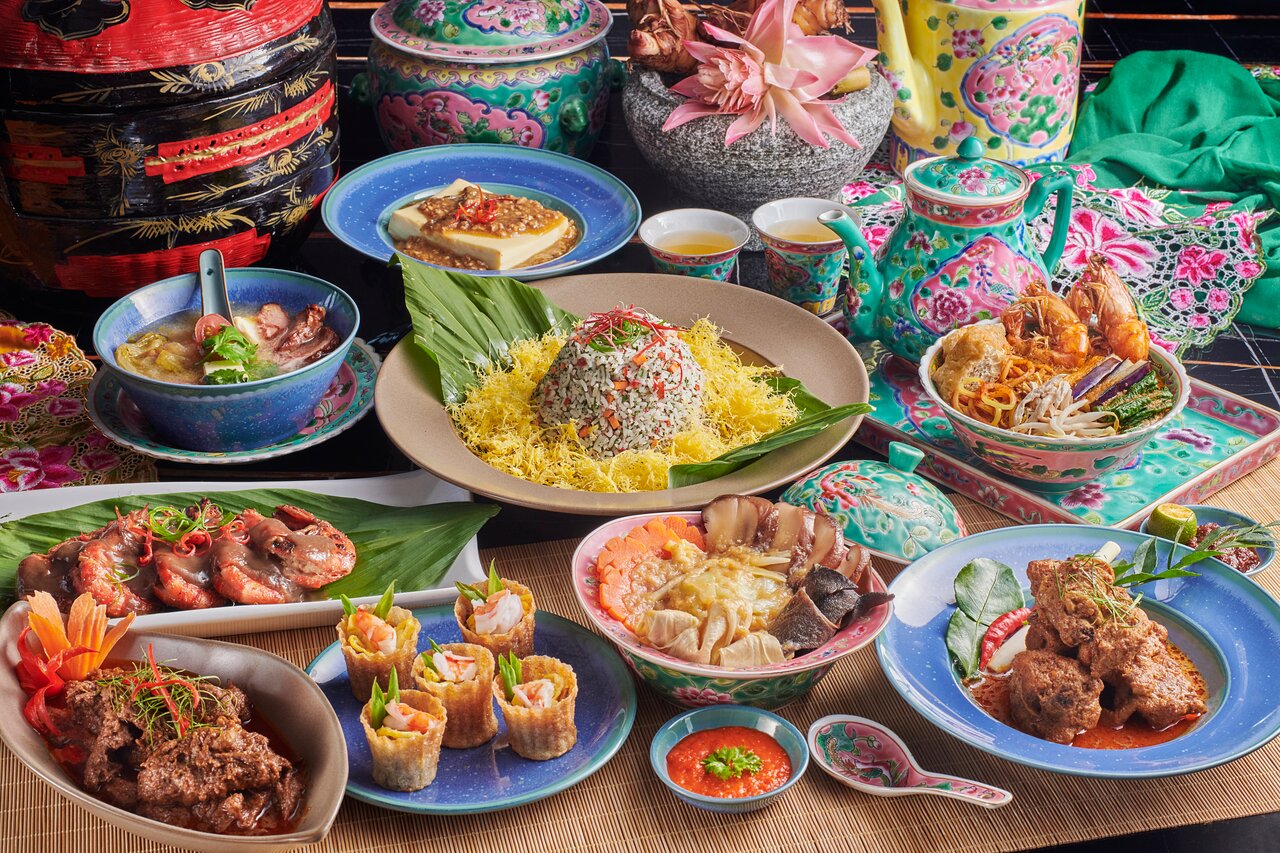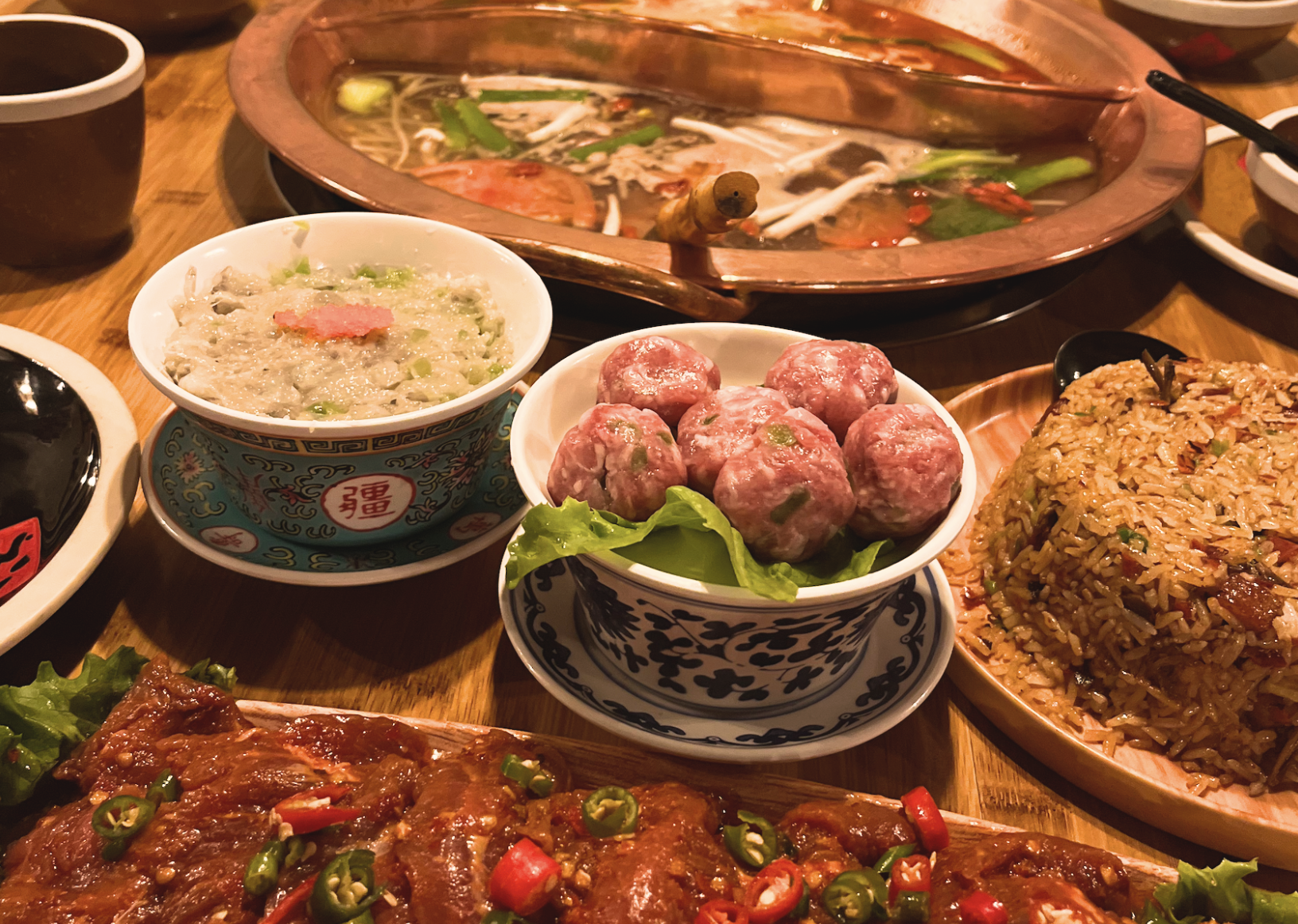Chinese Takeout is a bite-sized, biweekly RADII feature that examines Chinese food from the inside out, by disentangling the (hi)stories behind a single dish or restaurant. Write to us if you have a suggestion or submission.
For nearly 150 years, San Francisco was synonymous with the best Chinese food in the United States.
It was only after the 1970s that it was supplanted as the Chinese food capital of the United States — first by New York City, and eventually by Los Angeles. But to this day, the best Chinese restaurant in the United States can still be found in San Francisco’s Bay area.
As the US’s Chinese food landscape has grown and diversified — and produced many excellent restaurants in the process — naming the best dim sum restaurant, let alone the best Chinese food restaurant, is of course a highly contentious subject.

But this establishment’s lineage, popularity, and most importantly, its innovative approach to dim sum in aspects of its menu — while honoring tradition in others — puts Dragon Beaux among the best, if not the best, dim sum in the United States.
Even diehard Chinese food lovers from Los Angeles — currently the nation’s reigning capital — will make a pilgrimage up the coast just to dine out at this San Francisco restaurant.
The Place
Though reviews on sites like Yelp are mixed, in this case they aren’t actually indicative of the venue’s quality. That lack of wider acclaim can partly be attributed to its offbeat dinner fare — Cantonese hotpot — compared to the Hong Kong-style seafood other restaurants serve.
For serious fans of dim sum in Los Angeles, Dragon Beaux is already well known — and highly coveted. (Los Angeles has the best Chinese food in the country, and when Los Angeles diners openly wish there was something like Dragon Beaux in their city, that should tell you something.)
It’s also no coincidence that Dragon Beaux is as excellent as it is, as it comes from a lineage by way of the Koi Palace group (owners of Koi Palace, Dragon Beaux, and recently-opened Palette in San Francisco’s Ghirardelli Square).
The Ng family first opened Koi Palace in the San Francisco suburb of Daly City back in 1996. While Cantonese live seafood restaurants had operated in the United States since the early ’80s, Koi Palace raised the bar dramatically, particularly with its live seafood offerings, matched by an array of seafood tanks then unseen in the United States. Their lunch time dim service was equally as pioneering, with a variety of delicate, sophisticated dim sum items also never before seen in the United States.
Related:
 Chinese Takeout: A Bite of New York Chinatown’s Oldest Dim Sum ParlorPlus, why this over 100-year-old establishment brought its dim sum back to southern ChinaArticle Sep 26, 2019
Chinese Takeout: A Bite of New York Chinatown’s Oldest Dim Sum ParlorPlus, why this over 100-year-old establishment brought its dim sum back to southern ChinaArticle Sep 26, 2019
Koi Palace was quickly acknowledged as the best around, though Los Angeles was then already considered the Chinese food capital of the United States. Part of its success was also because Ng was prescient enough to realize that even though they were on top, the food around them was changing. Consequently, Koi Palace regularly reinvented itself and its menu, but was also sending its staff to Hong Kong to stay top of evolving Cantonese food trends. As such, Koi Palace was able to stay atop the heap for nearly 20 years.
But Cantonese food in Hong Kong and Guangzhou was evolving at such a speed that any existing US establishment would naturally fall behind. For that reason, the Koi Palace group decided to open Dragon Beaux in 2015. When asked why they felt the need to create a new brand, instead of making changes to Koi Palace, Koi Palace executive Dennis Leung told me that the problem with an existing operation like Koi Palace is that the staff remains the same, as does the customer base. With Dragon Beaux, the company was free to create a new menu, hire younger chefs not tethered to the past, and target a different audience altogether.

Red rice fish noodle rolls (cheung fun)
The move paid off; while Koi Palace is indeed no longer the best, many agree that Dragon Beaux is now the new number one, with its assortment of innovative and creative dim sum items, drawing diners from other cities in search of superior dim sum.
The History
From the time of the San Francisco Gold Rush until after World War II, San Francisco was effectively the sole port of entry for Chinese migrating to the United States. The vast majority came from the rural parts of Guangdong province, which fed the Cantonese core population that even today makes up San Francisco’s Chinatown. Unofficial estimates claim that Chinese comprised 10 percent of San Francisco’s population in the mid-20th century, while in New York and Los Angeles, the Chinese population in those cities was well under 1 percent.
This not only made San Francisco the king of American Chinatowns, but really the only Chinese American community of any importance for decades. And obviously, for Chinese food, San Francisco was the only place to be.
Related:
 Chinese Takeout: A Dining Upheaval in LA’s San Gabriel ValleyMainland Chinese chains are unseating Hong Kong-style eateries in the US, and Bistro Na’s exemplifies this trendArticle Sep 12, 2019
Chinese Takeout: A Dining Upheaval in LA’s San Gabriel ValleyMainland Chinese chains are unseating Hong Kong-style eateries in the US, and Bistro Na’s exemplifies this trendArticle Sep 12, 2019
Once new legislation allowed Chinese to immigrate to the United States after decades of exclusion, immigrants from Hong Kong and Taiwan flowed into cities like LA and New York City, and San Francisco was then no longer the dominant destination.
Chinese food in America also started to diversify greatly during this time, as restaurants serving other Chinese regional cuisines began opening up, and old-school seafood palaces opted to serve modern dim sum.
The Food
The term “dim sum” generally denotes longtime favorites such as har gow, siu mai, steamed BBQ pork buns, turnip cakes, and rice noodle rolls (or cheung fun) that have been staples of dim sum houses for many decades. Since dim sum itself is centuries old, these were the tried and true varieties that rose to the top.
Related:
 Chinese Takeout: The Chef Who Gave Up Serving Presidents to Bring Dim Sum to the PeopleSome say har gow, a popular type of dim sum dumpling, are the truest sign of a Cantonese chef who’s worth his salt – and this one’s cooked for George H.W. Bush and Queen Elizabeth IIArticle Jul 04, 2019
Chinese Takeout: The Chef Who Gave Up Serving Presidents to Bring Dim Sum to the PeopleSome say har gow, a popular type of dim sum dumpling, are the truest sign of a Cantonese chef who’s worth his salt – and this one’s cooked for George H.W. Bush and Queen Elizabeth IIArticle Jul 04, 2019
Two decades ago, dim sum began to see a shift towards what, in today’s parlance, would probably be described as “artisanal,” more delicate and refined than before. Shortly thereafter was a more revolutionary change: the decision by some houses to abandon the rolling dim sum carts that had been used since the 1960s or ’70s, making it a cook-to-order menu item. This was a game changer, as it allowed new varieties to be created that did not have to withstand a long ride around the dining room in a heated dim sum cart.
These events has spawned the creation of “non-traditional” dim sum, limited only by the maker’s imagination. While some traditionalists feel that dim sum carts are the true experience (not realizing that they were an invention of the second half of the 20th century), or that the new varieties are somehow blasphemous, there are still more that enjoy innovative varieties but also feel that some traditional varieties have to be part of the meal.
This is where Dragon Beaux arguably excels — for many diners, the praise is effusive in both categories. Perhaps the best testament to this is that two traditional items that I usually pass up — the glutinous pillow (a fancy name for hom sui gak) and the fried taro puffs — were absolutely fantastic. I personally had no idea these items could be so tasty.
A personal favorite in the “innovative” category is their red rice fish cheung fun — made with a shocking shade of red rice filled with fish chips — which immediately transfixed me on my first visit. Dragon Beaux’s abalone tart is also unique and pure deliciousness. For about 9USD, you obviously don’t get much of it, but the small slice of abalone topping a bed of custard is a wonderful combination.
Having eaten dim sum in every Chinese community in the US, Dragon Beaux stands out to me for several reasons. Their innovative dim sum items are creative and delicious, no surprise considering the Koi Palace lineage. But they haven’t forgotten the classics, either, many of which are best in their class.
Yes, a small number of items may miss the mark, and there’s the occasional inconsistency, but when you see diners making a trip to San Francisco just to eat Dragon Beaux’s dim sum, that probably says more about the place than any single person’s opinion. Dragon Beaux is part of the best managed Chinese restaurant group in the United States — and the quality shows.














